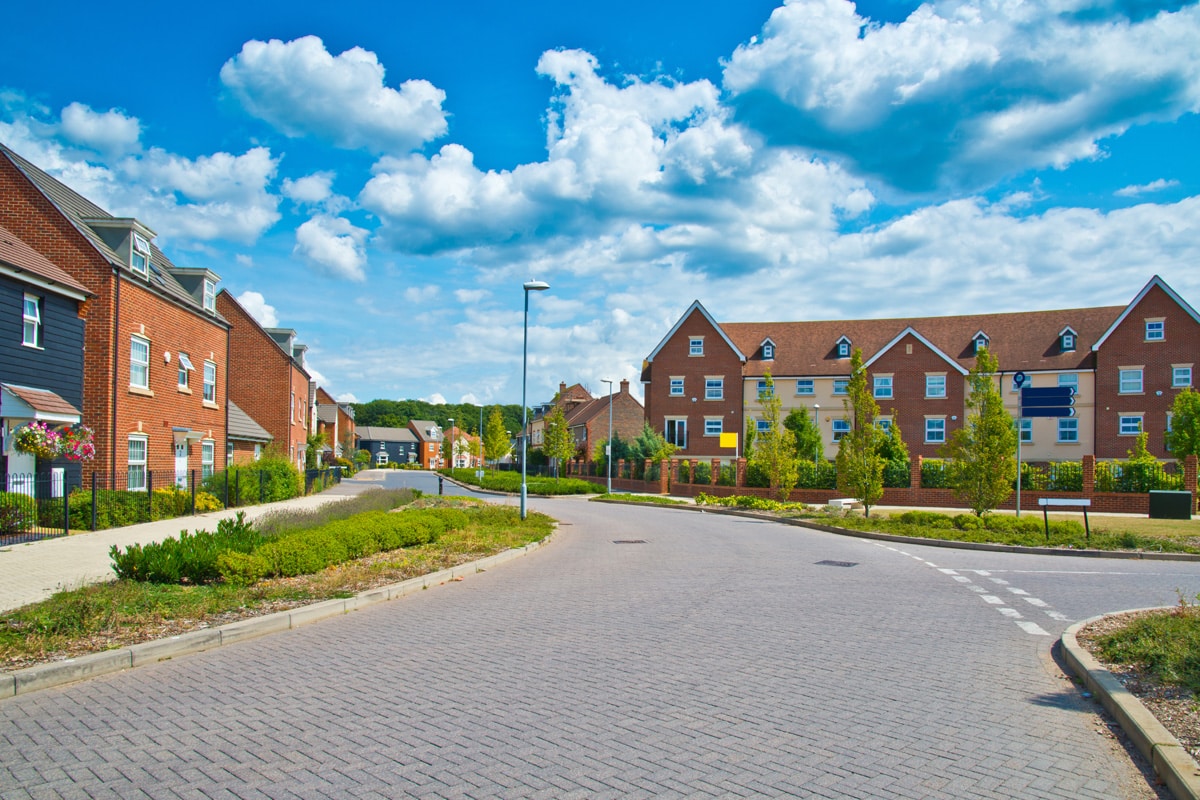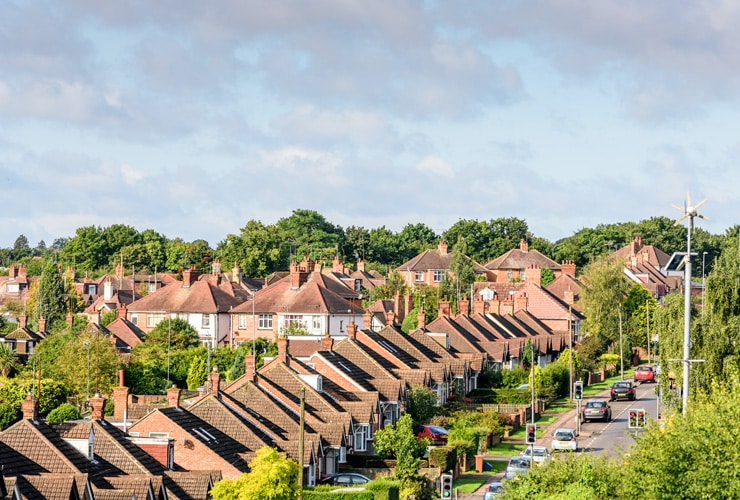Is Flipping Houses a Profitable Strategy in 2025?
Flipping houses is a popular strategy and appealing to investors in the current property market due to it's potentially high returns.
It can come with significant risks and rewards however, and not for the feint of heart or investors looking for a guaranteed outcome.
For those investors who are up for the challenge of flipping, the can see great results from doing only one main project a year. Below we look at how this strategy works.
For other property investment approaches you can check out our article comparing our top buy-to-let strategies here.

-
by Robert Jones, Founder of Property Investments UK
With two decades in UK property, Rob has been investing in buy-to-let since 2005, and uses property data to develop tools for property market analysis.
How does Flipping Houses Work?
The house flipping strategy usually works by buying a house at a lower price and then reselling it at a higher price within a relatively short period of time.
Flipping houses is not the same as buy-to-let as the property is not rented out in the intervening period.
Nor is flipping technically the same as property development, renovation, or the buy-refurbish-refinance strategy.
When you buy a house to flip you do not let it out, nor do you always undertake substantial renovations or improvements.
The sole objective is to resell it for the highest return on investment possible, in the quickest time as possible, which requires buying the property at the best price and acting with speed.
Flipping houses is a buy low-sell high strategy. You need to be able to find great deals and look for motivated sellers. You need sellers that have equity in their home as it's very difficult to do a deal on a property with negative equity, (find out what negative equity is here).
Flipping houses is also sometimes known as buy-to-sell.

Access our selection of exclusive, high-yielding, off-market property deals and a personal consultant to guide you through your options.
Why Flip Houses for Profit?
Property investment is generally regarded as a long-term strategy. For this reason, people often ask "is buy-to-let worth it?" because you have to be in it for the long term, hence the saying "don't wait to buy property, buy property and wait".
Flipping is different.
Property investors, traders and property developers who flip houses for profit are usually attracted to it because it is a short-term project. It can potentially offer a high profit within a short timeframe, perhaps just a few months.
When you consider that investors often target 20% returns on a flip project. If they are invested at £200k and targeting a return on investment of £40k (20%), if this was achieved in one year it is a great return.
If a trader can do this in months, you can see why house flipping can offer a higher return on investment or ROI than even buying a holiday let which is considered one of the highest returns for a rental strategy.
Many house-flipping projects also involve much less work than other types of larger-scale development projects, like conversions, planning gain or back to brick renovations and are much quicker than other strategies like land banking.

How to Flip Houses Profitably
One of the fundamentals of successful house flipping is good research. You need to estimate likely buying and selling prices – and all the costs involved with both – in order to ascertain if a flip is likely to be profitable.
Look to buy below market value. You should always aim to buy a property under its full market value.
Finding houses off-market can be a great way to do this. Then aim to resell at the full market value, this offers potential for a profit margin. Buying below market value is sometimes possible by buying at a property auction too.
Estimate buying costs carefully. Estimate likely legal fees, calculate stamp duty you will need to pay and any other costs such as finance charges and interest.
Also, allow for any costs you might incur while you own the property such as utility costs and insurance and possibly Council Tax (you can even make a saving and reduce your council tax costs during ownership, if you think you are on an incorrect rate you can challenge your council tax band).
Estimate selling costs carefully. Estimate likely estate agent’s fees or commission, legal fees and any taxes such as Capital Gains Tax you might need to pay.
Estimate any repair and refurbishment costs carefully. House-flipping projects generally do not involve major work. This is because major works can involve uncertain timescales and costs which affect the viability of the project. However, with flipping, there may be some repairs that you need to do before reselling the property.
Or you may opt to do some minor works, such as minor refurbishment or redecoration, that will help to add value and/or sell the property more easily, but unlikely to consider major works like houses with subsidence issues.
Consider price trends. Estimate a likely selling price. With house flipping, you need to consider property prices in the short term rather than the long term. Check whether local property prices are rising or falling (and by how much) or are staying flat. UK House Price Index Data from HM Land Registry can help with this. You could also obtain opinions from local estate agents.
When considering local price trends also look at whether there are any other factors which might affect local property prices. For example, a new road connection or a new large employer moving into the area might lead to a rise in prices. A large new build housing development or a larger employer closing down might cause prices to stay level or even fall.
Time everything carefully. To be profitable house flipping projects should be completed within a short time period. This reduces the cost of financing the project and reduces the risk that the property market will change substantially before the house is sold.
In a period of falling property prices aim to buy towards the bottom of the fall in prices and resell once prices start to pick up again.
You might also aim to buy when you can buy at the lowest price and sell when you can potentially sell at the highest price. For example, buy before Christmas and sell in the spring.
How to Estimate Whether Flipping may be Profitable
A simple calculation can be used to help estimate whether flipping may be profitable:
Possible flipping profit =
Likely buying price
Plus likely buying costs
Plus likely repair costs
Plus likely selling costs
= Total costs
Subtracted from likely selling price
You can estimate the possible return on your investment or ROI by dividing the profit by the total investment.
For example, if you buy a property for £220,000, your costs are £30,000, and then you resell it for £300,000 your return on investment will be £50,000/£250,000 x 100 = 20%.

When does Flipping Houses Work Best?
It is very important to point out that a house flipping strategy works best in hot or warm property markets. That is, when there are lots of buyers and fewer sellers and when prices are rising.
In these kinds of markets, there is the possibility that you will be able to resell at a higher price than you buy simply because property prices overall are rising. This is in addition to any gain you might make from buying at below-market value or carrying out any improvements.
A house flipping strategy may not be as effective in cool property markets. That is, when there are fewer buyers and many sellers and when prices may be level or even falling. House flipping can still be a profitable strategy in these market conditions, especially when buying a house well under market value. However, there is an increased risk that it may not be possible to resell at a higher price.
So, is Flipping Houses still a Profitable Strategy?
Whether or not flipping houses is likely to be a profitable strategy depends on two main factors:
Firstly, how accurately you are able to estimate buying and likely selling prices and related costs.
Secondly, how do you see property prices performing over your time of ownership? If you take too long to develop or simply sell the property it gets harder and harder to predict the market and ultimately your selling price as over a long time line the property market is difficult to predict. There are trends like the 18 year real estate market cycle which show when a potential UK house price crash could be coming.
If you plan to see house prices in the UK rising then flipping houses can be a potentially profitable strategy. If you see house prices in the UK falling then flipping houses can be very difficult unless you buy exceptionally well and negotiate a discount on the house price.
Here’s what some industry experts forecast:
- Knight Frank forecast that house prices will grow by 2.5% in 2025, 3% in 2026 and 3.5% in 2027.
- Savills predict UK house prices growing stronger, with a forecast of 4% in 2025, 5.5% in 2026 and 5% in 2027.
It is important to do your own research to help you decide. Check out specific location guides as each region and city will be different to national growth averages. For example if you are looking at buy-to-let in Brighton or Isle of Wight, they will be very different markets.
Therefore the answer as to whether flipping houses is still a profitable strategy is – yes, in some locations and for some property types. But it depends greatly on your local property data.
